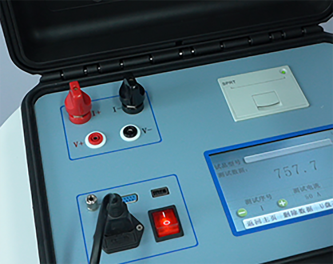 English
English



-
 Afrikaans
Afrikaans -
 Albanian
Albanian -
 Amharic
Amharic -
 Arabic
Arabic -
 Armenian
Armenian -
 Azerbaijani
Azerbaijani -
 Basque
Basque -
 Belarusian
Belarusian -
 Bengali
Bengali -
 Bosnian
Bosnian -
 Bulgarian
Bulgarian -
 Catalan
Catalan -
 Cebuano
Cebuano -
 China
China -
 China (Taiwan)
China (Taiwan) -
 Corsican
Corsican -
 Croatian
Croatian -
 Czech
Czech -
 Danish
Danish -
 Dutch
Dutch -
 English
English -
 Esperanto
Esperanto -
 Estonian
Estonian -
 Finnish
Finnish -
 French
French -
 Frisian
Frisian -
 Galician
Galician -
 Georgian
Georgian -
 German
German -
 Greek
Greek -
 Gujarati
Gujarati -
 Haitian Creole
Haitian Creole -
 hausa
hausa -
 hawaiian
hawaiian -
 Hebrew
Hebrew -
 Hindi
Hindi -
 Miao
Miao -
 Hungarian
Hungarian -
 Icelandic
Icelandic -
 igbo
igbo -
 Indonesian
Indonesian -
 irish
irish -
 Italian
Italian -
 Japanese
Japanese -
 Javanese
Javanese -
 Kannada
Kannada -
 kazakh
kazakh -
 Khmer
Khmer -
 Rwandese
Rwandese -
 Korean
Korean -
 Kurdish
Kurdish -
 Kyrgyz
Kyrgyz -
 Lao
Lao -
 Latin
Latin -
 Latvian
Latvian -
 Lithuanian
Lithuanian -
 Luxembourgish
Luxembourgish -
 Macedonian
Macedonian -
 Malgashi
Malgashi -
 Malay
Malay -
 Malayalam
Malayalam -
 Maltese
Maltese -
 Maori
Maori -
 Marathi
Marathi -
 Mongolian
Mongolian -
 Myanmar
Myanmar -
 Nepali
Nepali -
 Norwegian
Norwegian -
 Norwegian
Norwegian -
 Occitan
Occitan -
 Pashto
Pashto -
 Persian
Persian -
 Polish
Polish -
 Portuguese
Portuguese -
 Punjabi
Punjabi -
 Romanian
Romanian -
 Russian
Russian -
 Samoan
Samoan -
 Scottish Gaelic
Scottish Gaelic -
 Serbian
Serbian -
 Sesotho
Sesotho -
 Shona
Shona -
 Sindhi
Sindhi -
 Sinhala
Sinhala -
 Slovak
Slovak -
 Slovenian
Slovenian -
 Somali
Somali -
 Spanish
Spanish -
 Sundanese
Sundanese -
 Swahili
Swahili -
 Swedish
Swedish -
 Tagalog
Tagalog -
 Tajik
Tajik -
 Tamil
Tamil -
 Tatar
Tatar -
 Telugu
Telugu -
 Thai
Thai -
 Turkish
Turkish -
 Turkmen
Turkmen -
 Ukrainian
Ukrainian -
 Urdu
Urdu -
 Uighur
Uighur -
 Uzbek
Uzbek -
 Vietnamese
Vietnamese -
 Welsh
Welsh -
 Bantu
Bantu -
 Yiddish
Yiddish -
 Yoruba
Yoruba -
 Zulu
Zulu
testing of three phase transformer
Testing of Three-Phase Transformers
The testing of three-phase transformers is a critical procedure in ensuring operational efficiency, reliability, and safety in electrical systems. Three-phase transformers are essential components in power distribution, industrial applications, and electrical grids, where they convert electrical energy from one voltage level to another. Given their importance, testing these transformers is vital in both factory settings and in the field.
Importance of Testing
Before a three-phase transformer can be deployed, it must undergo a series of tests to validate its performance and operational standards. These tests are crucial for detecting manufacturing defects, ensuring compliance with specifications, and confirming that the transformers will function safely under normal working conditions. Furthermore, routine testing during operation can help identify any degradation in performance or potential failures.
Types of Tests
1. Factory Tests Factory tests are conducted before the transformer is shipped out. These tests include - Power Factor Testing This test measures the insulation's ability to withstand electrical stresses. A low power factor reading could indicate insulation deterioration. - Turns Ratio Testing This test checks the ratio of primary to secondary windings. A discrepancy could signal a fault in the windings or connections. - Insulation Resistance Testing This predicts the transformer’s ability to resist leakage currents, ensuring that the insulation is intact.
2. Commissioning Tests Upon installation, additional tests are performed to confirm that the transformer operates correctly within the specified limits. These include - Short-Circuit Testing This assesses the transformer's behavior under fault conditions. It helps determine the impedance and heating effects resulting from short circuits. - Load Testing The transformer is loaded to verify its performance under operational conditions. This ensures that the transformer meets load requirements and operates efficiently.
testing of three phase transformer

3. Routine Maintenance Tests Routine testing during the transformer’s operational life is essential for predictive maintenance. Common tests include - Dissolved Gas Analysis (DGA) This test identifies gases dissolved in the transformer oil, which can indicate electrical or thermal faults. - Thermal Imaging This technology is used to detect hotspots on the transformer, assessing the integrity of electrical connections and insulation. - Frequency Response Analysis (FRA) This test evaluates the mechanical integrity of the transformer’s windings. It helps in detecting displacements and deformities that could affect performance.
Equipment Used in Testing
Various specialized equipment is employed in the testing of three-phase transformers. This includes
- Transformer Turns Ratio (TTR) Meters These devices measure and compare the voltage ratios of transformer windings to ensure they comply with design specifications. - Insulation Testers These are used to measure the insulation resistance, ensuring that the transformer can withstand electrical stress. - Power Quality Analyzers These tools assess the quality of the electricity flowing through the transformer, checking for issues like harmonics and voltage dips or spikes.
Conclusion
In conclusion, testing of three-phase transformers is a comprehensive process that is essential to the lifespan, reliability, and efficiency of electrical systems. From factory testing to routine maintenance, each step serves to validate the transformer’s design and operational capabilities. The use of various high-tech equipment helps ensure that these vital components function effectively and safely in their intended applications. By consistently applying rigorous testing protocols, operators can mitigate risks associated with transformer failures and enhance the overall reliability of electrical systems. As technology continues to evolve, the methods and equipment used in transformer testing will likely advance, providing even better monitoring and diagnostic capabilities for these crucial electrical devices.
-
Testing Equipment Industry Sees Major Advancements in 2025: Smart & Precision Technologies Lead the WayNewsJun.06,2025
-
Applications of Direct Current Generators in Renewable Energy SystemsNewsJun.05,2025
-
Hipot Tester Calibration and Accuracy GuidelinesNewsJun.05,2025
-
Digital Circuit Breaker Analyzer Features and BenefitsNewsJun.05,2025
-
Benefits of Real-Time Power Quality Monitoring Devices for Industrial EfficiencyNewsJun.05,2025
-
Earth Fault Loop Testing in High-Rise Building Electrical SystemsNewsJun.05,2025



